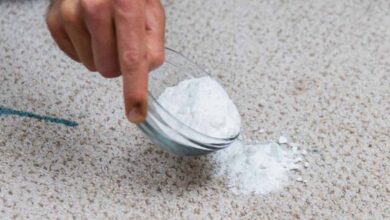The two hidden dangers in your feet you shouldn’t ignore
These common but silent foot problems could lead to serious health issues if left untreated.
Your feet work hard for you every day, but did you know they can also reveal hidden health problems? Experts warn that changes in foot color, temperature, or nail texture might be early signs of heart disease and diabetes—two silent killers that can lead to severe complications if ignored.
Your feet are the farthest body part from your heart, making them one of the first places to show signs of poor circulation. If your feet feel persistently cold, have wounds that heal slowly, or appear discolored, these could be red flags for heart disease or diabetes. Medical professionals urge people to pay attention to these subtle symptoms, as early detection can prevent serious health consequences like infections, amputations, and even life-threatening complications.
Poor circulation is a major indicator of heart disease, and your feet may be the first to show symptoms. Noel Wicks, a pharmacist and health advisor, explained to Express that the small blood vessels in the toes are highly susceptible to fatty blockages, which restrict blood flow.
“We need to keep an eye on our foot health, including our toenails, because it can [have an] impact on our overall health and be a sign of [serious] health issues,” Wicks said.
Signs of heart disease in your feet
According to WebMD, some common foot-related symptoms of heart disease include:
- Cold feet: Poor circulation prevents warm blood from reaching your extremities, making your feet feel cold even in warm temperatures.
- Slow-healing wounds: Cuts, blisters, or sores that take an unusually long time to heal may indicate insufficient blood supply.
- Pain while walking (claudication): Aching or cramping in the feet and legs during physical activity, which subsides when resting.
- Discoloration: Feet may turn pale, blue, or purplish due to reduced blood flow.
- Cramping: Painful cramps in the hip, thigh, or calf muscles while climbing stairs or walking.
These symptoms may seem minor at first, but they shouldn’t be ignored. If they persist, a medical check-up is highly recommended.
The link between diabetes and foot health
Diabetes affects blood circulation and nerve function, often causing the first noticeable symptoms in the feet. If left untreated, these problems can lead to severe complications, including infections and amputations.
The Centers for Disease Control and Prevention (CDC) warns that untreated foot ulcers in diabetics can become severely infected. If the infection does not heal, amputation of the toe, foot, or even leg may be necessary to prevent the infection from spreading.
Shockingly, the CDC states that 80% of lower limb amputations in the U.S. result from diabetes complications. This alarming statistic highlights the importance of foot health in diabetes management.
Common foot-related diabetes symptoms
Diabetes can cause a range of foot-related issues, including:
- Leg pain or cramping in the buttocks, thighs, or calves during activity.
- Tingling, burning, or numbness in the feet.
- Reduced sensitivity to touch, heat, or cold.
- Changes in foot shape over time.
- Loss of hair on the toes, feet, or lower legs.
- Dry, cracked skin and thickened, yellow toenails.
- Fungal infections, including athlete’s foot.
- Blisters, sores, ulcers, infected corns, or ingrown toenails.
Many people don’t realize they have diabetes until foot-related symptoms appear. That’s why it’s essential to recognize these warning signs and seek medical advice immediately.
Take action – Don’t ignore the warning signs
Your feet can reveal crucial information about your overall health. If you notice persistent symptoms such as discoloration, chronic coldness, pain, or slow-healing wounds, it may be time to see a doctor. Early detection of heart disease or diabetes can prevent severe complications, including amputations and infections.
So next time you take off your shoes, take a good look at your feet—they might be trying to tell you something important.





